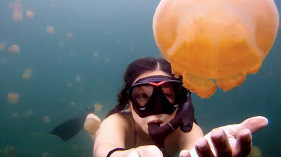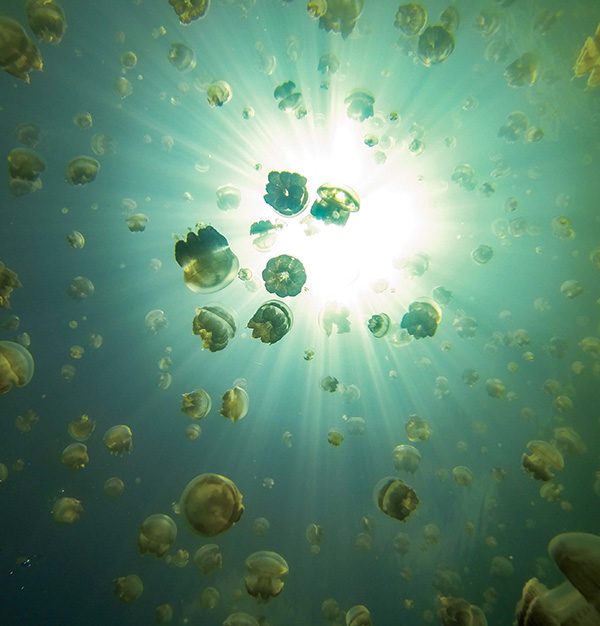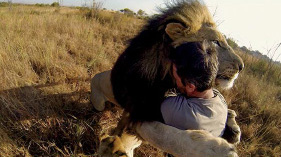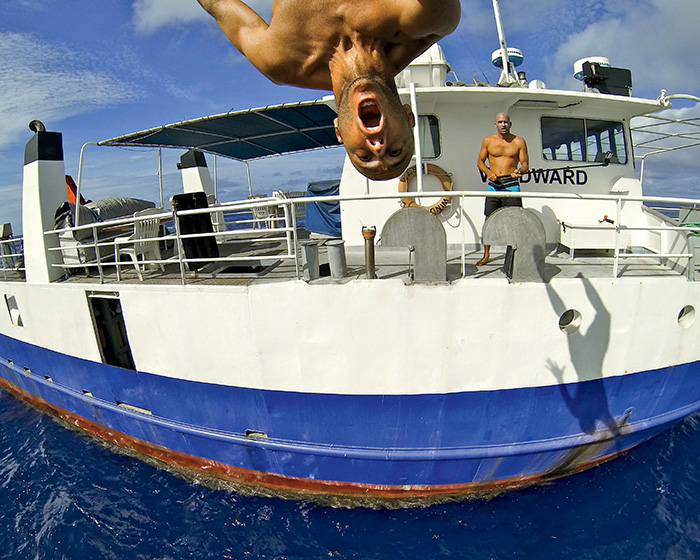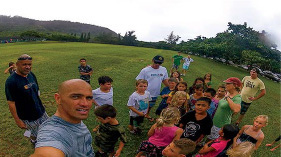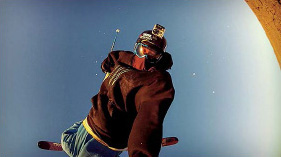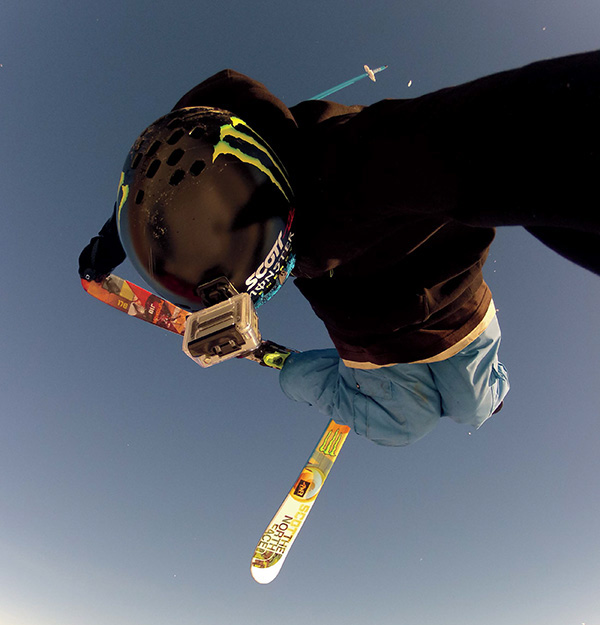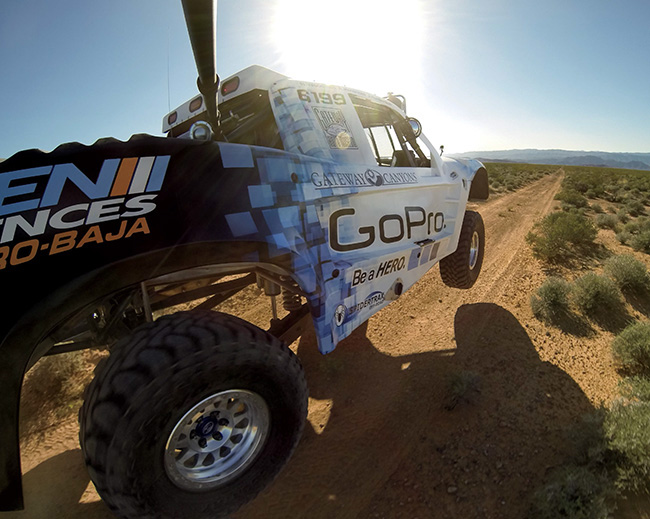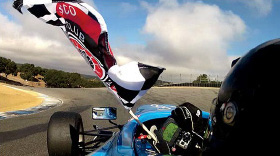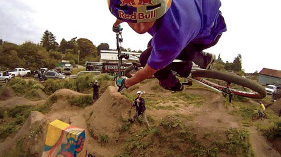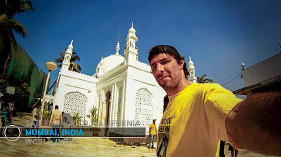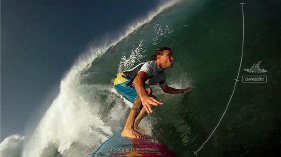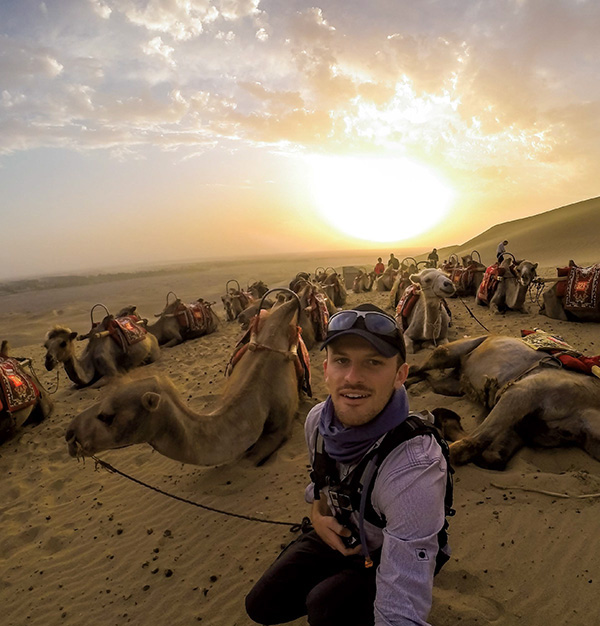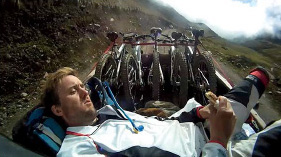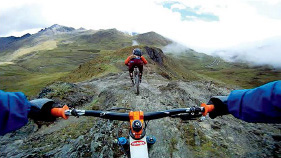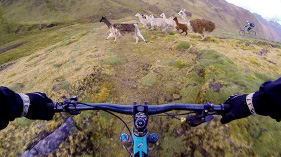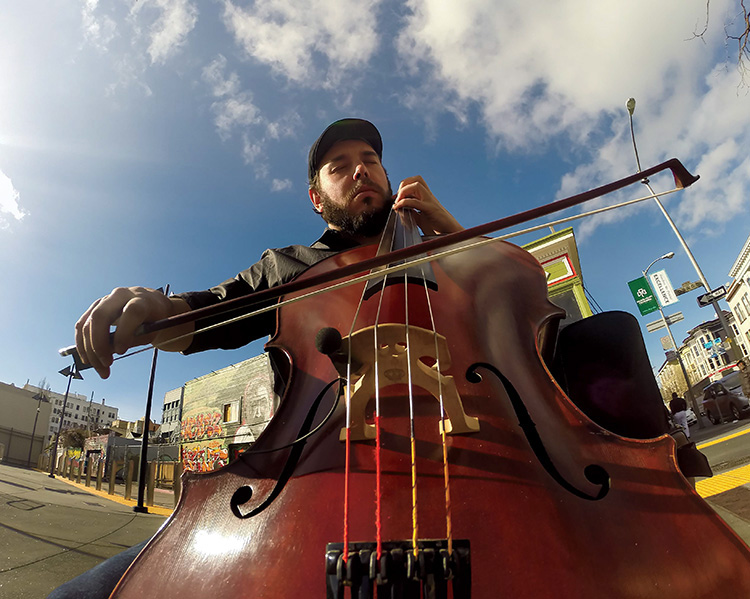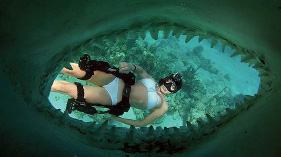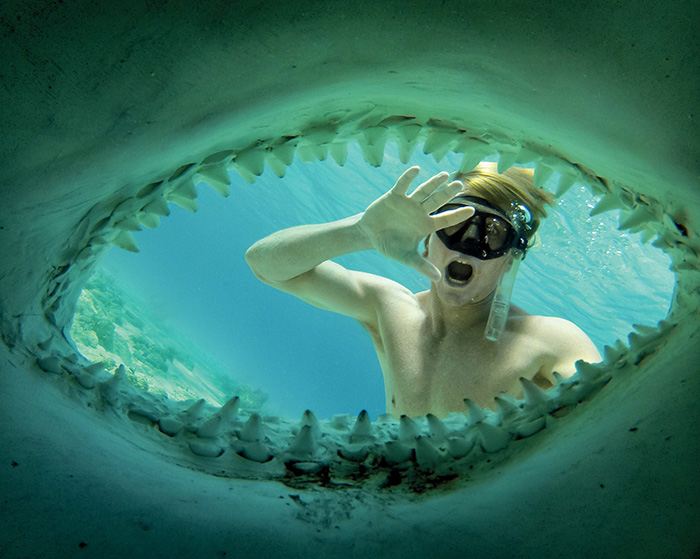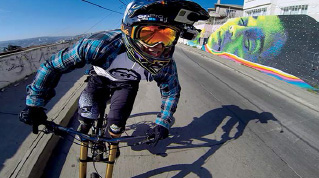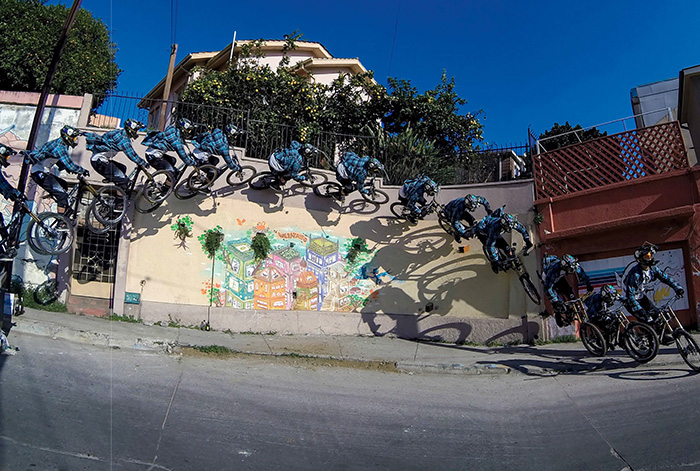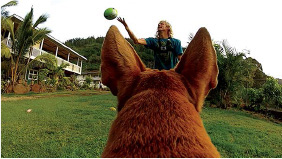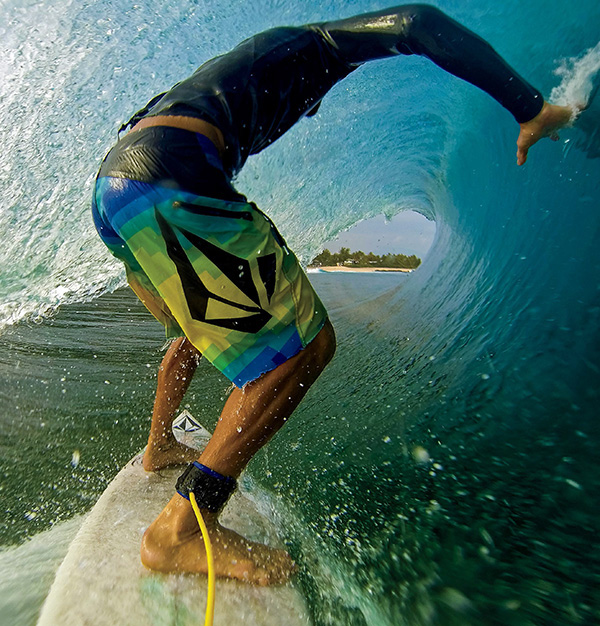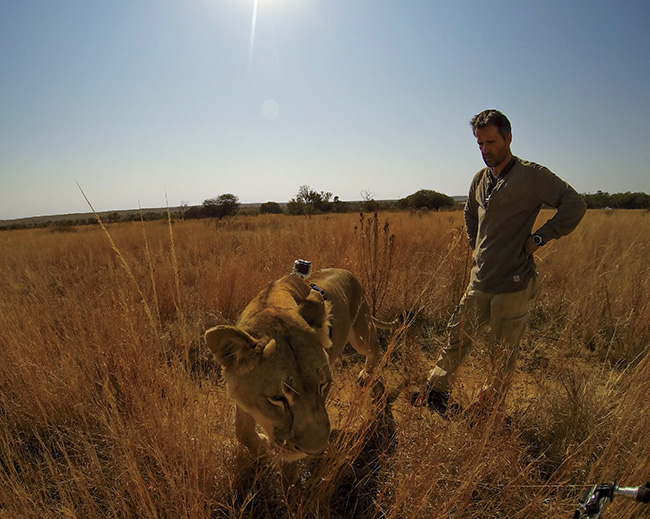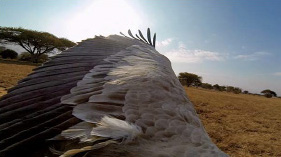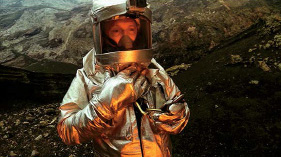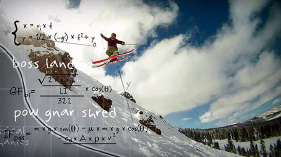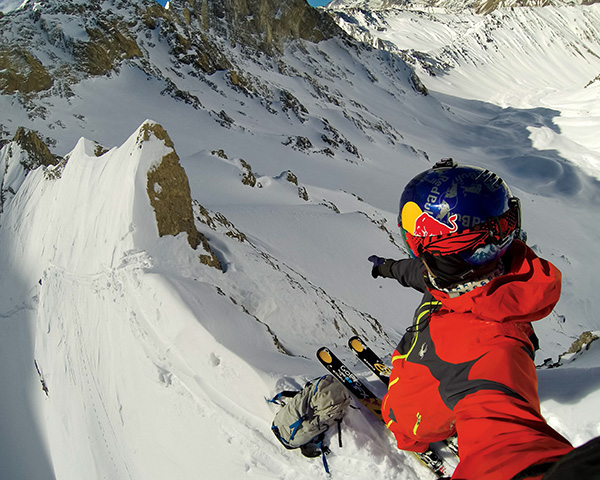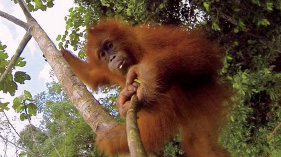Chapter 6. Story Analysis
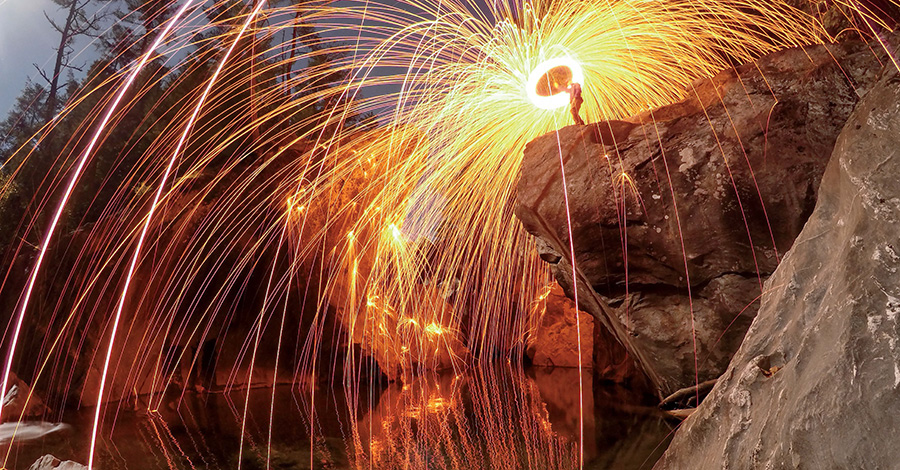
Justin Jenny / Huntington Gorge, Vermont ![]() Tripod
Tripod ![]() 30sec Exposure, ISO 800
30sec Exposure, ISO 800
Good storytelling invites the audience to take part. It involves them. It asks them to be invested—to be emotionally wrapped up in the story. How does this happen? The filmmaker presents a problem or puzzle that the characters and the viewers themselves must solve: a + b + c = ?
How involved viewers become depends on how artfully they are led toward the conclusion. If the answer is just on the tip of their tongue when it is finally revealed, then you’ve won them over. If the answer is too obvious or too opaque, then don’t count on the audience sticking around for the conclusion.
This makes the moment when you let your story out into the world a daunting one. As the creator, you are not there to modulate the viewer’s experience: why a certain shot is shaky or poorly framed, why a particular cut was made, or why the narrative feels vague or confusing. The story now stands on its own. Once your art has been released to the audience, it is now theirs. Their interpretation and understanding are as true as your own.
The filmmaker controls how the audience responds to the video through the various tools at his or her disposal. Proper planning, mounting, shooting, editing, and all the tools presented so far in this book are part of the filmmaker’s arsenal. In this chapter, we present examples of how GoPro has used all these tools to tell complete stories. Whether or not you think these are great stories, the process of analysis is important to storytelling.
The Moment
Not every project needs to be a big story piece. We often handle content from users who may not have had a sprawling, epic story in mind while shooting. These GoPro edits tend to be short pieces, in which the filmer has captured something that is spectacular, unusual, funny, touching, or virtuosic. At GoPro’s office, we define videos like these as moments.
Moments can consist of one-take shots or several shots cut together. They are short and sweet. Each shot is impactful and every second matters. A moment can go on as long as the audience’s attention is held, but the most natural length seems to be between one and two minutes long. Ending the video at the point of maximum engagement leaves the audience hungry for more.
Moments, like any story, have a beginning, middle, and end structure. The jellyfish video featured here was shot by one of our users. Production artist Tyler Johnson edited the moment and, in the rough cut phase, nailed the beginning and middle beats. However, the video ended while the girl was still swimming through the jellies. It was beautiful and flowed well, but the moment didn’t feel complete because nothing else really happened. Tyler went back into the footage for the second pass and found the clip where the girl reached out and held one of the jellyfish. The human connection to that magical world gave the moment completion and was the perfect ending beat.
The Montage
In all of GoPro’s product release reels, from the HD HERO2 to the HERO4, story takes a backseat to the powerful synthesis of action, music, controlled pacing, and smooth transitions. The montage hypnotizes the viewer with a seemingly unending stream of images. Rather than presenting a single story, a number of adventures are woven together to tell a larger story of human achievement and experience. And while the video may feel structureless, it’s not. A basic structure introduces the characters and environments so that the audience never feels lost and one moment flows smoothly into the next.
For a product release montage, editors tend to group shots into several different categories.
![]() Introductory shots introduce the characters and their environments.
Introductory shots introduce the characters and their environments.
![]() Gear-up shots show the characters getting ready, whether they are literally putting on gear or traveling toward their environmental obstacle.
Gear-up shots show the characters getting ready, whether they are literally putting on gear or traveling toward their environmental obstacle.
![]() Action shots show the characters conquering inherent obstacles or danger.
Action shots show the characters conquering inherent obstacles or danger.
![]() Reaction shots capture the characters in moments of genuine reaction to their triumph. These tend to be smiles, celebrations, and expressions of gratitude toward life or nature. Reactions form crucial interludes between action sequences. They give the video a sense of continual reprise or return to center and work well as the video’s resolution.
Reaction shots capture the characters in moments of genuine reaction to their triumph. These tend to be smiles, celebrations, and expressions of gratitude toward life or nature. Reactions form crucial interludes between action sequences. They give the video a sense of continual reprise or return to center and work well as the video’s resolution.
Perhaps the most challenging aspect of the montage is pacing. Both music and cutting speed control the edit’s pace, with cutting speed increasing as the music builds toward each climax. Individual shots and action cut sequences should be long enough that the audience fully understands where they are and what they are watching, yet short enough that the momentum isn’t slowed down. Here, discontinuity in time and space serves as an asset, causing the audience to constantly anticipate what’s next. The relentless crosscuts keep the viewer from ascribing too much importance to any one sequence, instead producing a greater sense of awe at the mind-boggling scope of human endeavor.
Character Study
At times—by charisma, antagonism, or sheer outrageousness—a character will eclipse traditional dramatic structure and carry a piece on his or her own. There are no hard lines here. Often, an in-depth exploration will reveal within the character those tensions and obstacles necessary for dramatic structure. Many story pieces are also great character pieces, and vice versa.
The “Leah Dawson ‘Slow Down’” video is a magical character piece. Dawson shot the surfing sequences during her travels and recorded the song on her rooftop at home. Structurally, Leah’s song both implies an obstacle (the pace of modern life) and offers a solution (slow down) for the audience to think about.
Another of our favorite character studies is “See You Tomorrow.” Kelly Slater is arguably one of the best athletes in the world, and a somewhat mystical character. The kickball game shows Slater’s childlike curiosity and excitement for the small meaningful moments in life. It also symbolizes another game that has been a part of Slater’s life for many years: the ASP World Tour. He’s an 11-time world-champion surfer, currently besting athletes half his age, who weren’t even born when he won his first world title. Slater grins at the ageless turtle and is seemingly ageless himself, a better athlete than ever at 40 years old. The end line “See you tomorrow,” represents what Slater is innocently telling the audience. No matter who’s the world champ this year, he’ll be back.
All of this may seem subtle—and it is. But viewers can only take away what is poured into a piece. Any piece of art retains inherent meaning from the amount of thought and emotion put into it by the creator. An audience may not always consciously recognize it, but they feel it.
Power Intro
The power intro is a unique way to create and motivate a story. It creates a frame where the action of the edit can take place and gives that action structure. Here, GoPro Senior Production Artist Abe Kislevitz uses a Mission Impossible–style intro to present the obstacle of capturing epic photos for the HD HERO2 product release. The intro is flashy and polished, and, most importantly, it informs the action for the rest of the edit.
Post-production additions such as graphics can reshape videos entirely. There is an industry saying that is often uttered on productions when something goes wrong: “We’ll fix it in post.” The power intro takes this saying quite literally. We use this structure often at GoPro: It’s a fun way to give depth and add story to a run-of-the-mill action sports montage. It can also be used to link together footage from different characters or locations, as can be seen in the Travel Montage structure presented later in this chapter.
The power intro provides the perfect opportunity to experiment with visual effects. For the beginner, designing and sustaining quality graphics over a short intro is easier than doing so for an entire edit. Kislevitz did all the visual effects work for the featured video “Mt. Hood Snow Photo Expedition” in After Effects and then augmented it with a number of other techniques, including sound effects, voiceover, music cueing, and audio filters. Extra touches like these do wonders to integrate graphics into a video and make them feel believable for the audience.
The Race
By its very nature, a race story has the structure built in. In this section, we feature two races with GoPro CEO Nicholas Woodman. The “Nick Woodman at Laguna Seca” video is straightforward POV coverage. The actual race was 20 or 30 laps long, but the editor selected and combined the most exciting parts to make the race feel like one or two seamless laps.
Stories in this genre often center around the character of the racer, whose great obstacle is to win the race. But what happens when the racer doesn’t finish, or even loses? This is when storycrafting gets interesting because the story must be about something other than winning.
The “Baptism By Fire - Vegas To Reno With Nick Woodman” video is a great example of how to combine or rearrange certain sections of a race to create a better narrative flow, while remaining true to the spirit of a piece. Production artist Pat Barrett’s rough cut was properly sequential. Pit stop 1 arrived, then pit stop 2, and so forth, each with an interaction and insight into Nick and Dave, the two characters. In the second pass, we took more liberties, rearranging the character interactions and pit stops. These character interactions, rather than any particular mile marker or pit stop, became the beats of the story. The memorable exchange about paying to take a shit—and Dave’s maniacal laughter—actually occurred early in the race. But moving it to right after the final breakdown and Nick’s perilous wounding earns the moment and connects the two characters. While the narrative may not be 100% chronologically accurate, it’s right on target emotionally. When we showed Nick the edit months later, he couldn’t recall that anything was out of place chronologically. Emotional truths can trump chronological facts, even to the characters who experienced them.
Athlete Sections
In 2010, GoPro was still a small company that most people had never heard of. We showed up at the Post Office Bike Jam in Aptos, California, and rigged up anyone who would wear our funny-looking little camera. Our equipment elicited skeptical looks from the crowd: long poles rigged with prototype 3D housings, experimental seatpost and bike frame mounts, and an extended gnarwhal off the front of Aaron Chase’s helmet. The results paid off, though. Afterwards the athletes watched incredulously and laughed at the new perspectives we’d captured.
We include this video as a nod to the classic action sports formula we grew up watching. Story-wise, not much directorial planning is needed for a video like this. Shooters capture plenty of coverage, while the editor introduces the characters individually and gives them their own action sequences. We tried to equally distribute the sequences with the best tricks and angles to keep viewers invested just when they might be on the verge of tuning out. The face shots and funny moments with the athletes break the action-induced hypnosis and give the viewer a second to breathe between sequences.
Overall, the combination of never-before-seen shots and a catchy music track made the “2010 Post Office Bike Jam” video a benchmark for GoPro and the first of our videos to hit one million views.
Bookends
Bookends refer to beginning and ending a video with the same or similar shot—a useful technique in dramatic storytelling. Probably the most common use of bookends features a character returning to the physical location where the story began. For the viewers, this can be especially satisfying if they feel like they’ve traveled somewhere and learned something before returning “home” again.
The original inspiration for the “Shaun White’s Birth of a Board” video came from the opening titles of the film Lord of War, when the audience follows a bullet from its manufacturing process until it’s fired from a gun in a war. Our video follows a snowboard from its origin as a tree in the forest to a finished product that White rides. We were having a hard time finding a natural ending in the editing room when it hit us: bookend it where we started! We called White and asked him to take a run and lean the board up against a tree to mirror the opening shot. Sometimes reshooting during the rough cut stage can give you the missing piece that pulls the puzzle of an edit together.
The Intermission
The intermission is particularly useful in breaking up action footage. Music and action cutting have a tendency to put viewers in a kind of trance. An intermission can break the trance and command attention. You can use an intermission in various ways, including communicating character insight, introducing music transitions, juxtaposing environments, or giving consequence to an action (such as a crash). An abrupt or discontinuous intermission can also serve a thematic purpose. By shedding light on previously presented characters, you can often dispel viewers’ preconceived notions.
During the rough cut of the “Alana and Monyca Surfing Hawaii” video, we felt the piece was becoming just another action montage. During production, Alana Blanchard and Monyca Byrne-Wickey wore chest-mounted cameras for hours while shopping around town. The editor dug back into the raws to find funny moments of the girls singing and shopping. He cut those together in a staccato intermission that broke up the montage and gave the audience a glimpse into the day-to-day life of two model surfer girls.
Travel Montage
What do you do when you have a lot of footage from a lot of different places? One of the simplest ways to use everything in a cohesive manner is to give the audience a tour. Keeping characters constant while cutting to different times and locations maintains continuity and lets the audience feel as if they are traveling alongside them.
Creating a framework and thread that the audience can follow helps the sequences work together. The “Jamie Sterling Big Wave World Champion 2011” video uses graphics and geography to link many disparate locations around the world. Each section could potentially be a short little web episode on its own, but the editor uses a framework to tie them all together. The video “A Year with Andy Mac” employs a slide motif and Andy Macdonald’s constant chatting to move through the adventure. This video showcases a great use of teasers to hook the audience and features a nice bookend. We begin and end at Bucky Lasek’s Backyard Bowl, with Macdonald giving us a positive message and hope for a new year. Intuitively, this conveys one of the most rewarding things about traveling: eventually you return home. You return to the same place, but you are not the same person. The experience has transformed you.
The Journey
The journey is a classic adventure film structure. It is like a travel montage, but with a more clearly defined beginning and end, fewer locations, and a major emphasis on storytelling. GoPro is a real asset for filming these projects: the camera’s unobtrusive nature and long recording time allow adventurers to film interactions in a more intimate and authentic way.
A mountain biking piece such as “Lost in Peru” is an especially natural fit for this structure. The piece was an orphan edit for a while: gigs upon gigs of unorganized footage passed around to various editors who tried to create a narrative flow. Finally, we decided to start at the top of the mountain and journey toward the bottom, structuring the theme and lessons learned along the way.
The introductory beat is the arrival in Cuzco and establishes the characters. We didn’t have many over-the-top, death-defying feats in the footage, so we grouped together all the steep, dark, cloudy shots and anything featuring ruins or cliffs. Because this was filmed over weeks on multiple mountains, we let the rocky paths and some color correction pull the disparate locations together. When Ali Goulet and Aaron Chase talk about the consequences of a fall, the trail starts to feel dangerous and threatening—enough to make viewers lean forward in their seats. This made the mountain itself the obstacle.
The middle beat, starting at 2:20, comes as the mountain’s grade flattens out. Though it may seem like a random intermission, the mini-store beat is essential because it shows the first awkward engagement between the main characters and the local people. When you’re first traveling abroad, the environment and indigenous people can feel intimidating and scary. But when you’ve established a connection, you quickly realize that the world is a good-hearted place filled with curious people just like yourself. As the characters connect with the local children onscreen, the clouds lift and the sun comes out. The trail is now friendly and welcoming. If the edit started off with this footage, the story would not have felt emotionally progressive for the audience. The new structure shows the characters learning something about themselves and the culture—which should be the true purpose of the journey, not just shredding some new line.
The subsequent climax has been earned and sums up literally what was only hinted at before. At a local school, the characters are able to give back in their small way to the people and culture, empowering those who have empowered them. The difference between the rough and final cuts is huge. The audience members probably won’t grasp all the beats on the first viewing, but they’ll feel the change in narrative flow. That’s the beauty of structure and story. Make every second and every shot count in the stories you tell.
The Sequel
Once you shoot successfully in a location, you’ll find yourself wanting to return there. This can create new challenges for the storyteller. How do you tell a story with the same characters, action, and location without repeating yourself?
The “Still Lost in Peru” video features Chris Van Dine, Aaron Chase, and Ali Goulet returning to Peru with friends for another biking trek. The edit presented difficulties due to the similarity of the content. The first rough cut was a 15-minute montage containing basically the same journey as the original Peru edit, including another final beat with the same children at the same school. For the second pass, the editor dove back into the raw footage and found a conflict between two of the main characters. This became the new obstacle. We reworked the major beats and began the sequel where the original story left off. This allowed the original theme to grow, from foreigners learning inside a new culture in the original video, to traveling friends working together and learning from each other in the sequel.
Music Video
One reason music works so well with narrative is that well-crafted songs and stories have many similarities. They both contain well-defined sections that give them structure. They are paced so that they rise in tension. They introduce ideas or themes that are often revisited or expanded upon later. And songs and stories can elicit powerful emotion in an audience.
“The Family Crest” walks through a modern band’s typical day as the band members generate enthusiasm for a newly released album. It was a great collaboration because both GoPro and The Family Crest were born in the San Francisco Bay Area, which is the video’s location. The band’s label, Tender Loving Empire, has longtime been a musical collaborator with GoPro’s media department. We also used an instrumental version of the song featured in this video for our HERO3+ product reel.
In the video, the song’s structure gives natural boundaries to each sequence. The first verse introduces us to the band and various environments. The first chorus coincides with the band playing in its practice space. In the second verse, the band takes photos and creates flyers. The second chorus hits as the band takes to the streets, playing live shows and distributing flyers for an upcoming performance. A quick bridge reminds us where we’ve been and where we’re headed. The last and most triumphant chorus drops as the band plays its album release show on stage at the Great American Music Hall. The whole edit has built toward this moment. The music plays for a little longer as a series of recaps reminds us of the journey we have been on. Then, the images cut out as the last chorus ends.
The music video is a format that many of us have seen since childhood. It’s a popular genre, simply because it works so well. And while a lot can be gained from a strictly “action cut” music piece, we believe that the best and most memorable music videos have story and structure built into them.
The Surreal
The “Director’s Cut - Shark Riders” video was originally a product release video for the HD HERO2’s flat lens dive housing. We spent a lot of time formulating the building blocks of the story on-site. Each night, we logged footage to see what worked and what didn’t. Then we discussed which beats we wanted to film the next day.
The first few days were spent listening to Healey and Mancino, and we noted their similarities and differences. From our conversations, a few common themes emerged: their tendency to seek spiritual experiences inside of nature, their fearlessness and fascination with predatory underwater animals, and their lack of trust in other human beings. Overall, we saw a story about two people who had an easier time connecting with nature than with other humans.
The Bahamian locations provided ample imagery, with sunken planes and ships that were great subtext for the two characters—one a bird, the other a fish, both moving through the story trying to connect with each other.
The introduction dives into the underwater world as both Healey and Mancino explore the surreal depths alone. They abruptly meet amidst shallow wreckage and part ways distrustfully. The shipwreck footage starting at 2:40 shows a spooky visual embodiment of the internal fear both independent characters need to overcome in order to make a connection. The surreal sequences, including Healey’s happy place in the pool and Mancino’s chase with the fake shark head, project their idealized worlds to extremes within an already dream-like reality. The two characters finally connect by riding a tiger shark, thus bringing together their mutual need to connect with each other through nature. The final shot bookends the introduction with an ascension back into the sky, calling attention to the existential question “What is real and what is a dream?”
For this video, post-production was scheduled for a week, which was a little optimistic. The surreal version ended up being a little too heady for a product release video, so we cut a simplified version and released the director’s cut eight months later. If you look closely at Healey’s pool scene, you can see both of this book’s authors, one floating on an inflatable mattress, the other wearing a cowboy hat and deftly cleaning the pool with a long-handled skimmer.
The End Is the Beginning
Concerning the rough cut, editor Gabriel Noguez said it best: “Your first draft should show your boldest ideas.” His rough cut of “Combing Valparaiso’s Hills” did just this. The opening scene boldly introduced Chris Van Dine, and his raw conversation with Aaron Chase lent gravity to the forthcoming feat and worked as an incredible hook. As a filmmaker, it’s good to note that one of the best ways to make your audience root for the protagonist is to have another character tell the protagonist they can’t do something. Such a side character, who challenges or empowers the protagonist, is often called a foil.
Nevertheless, that rough cut stumped us for weeks. We had a badass soundtrack, loads of footage, and nearly three minutes of introduction. So, what next? The raw moment between Van Dine and Chase worked great as an introduction, but the truth is that it was the only real climax or resolution in the footage. We tried making the plaza at the bottom of the hill the climax, and while the connection with the local culture was nice, it always felt flat for a climactic moment. So we decided to keep the climax and resolution where it was and make the ending the beginning. It was a fun little nod to Tarantino or Memento, giving the whole edit a cyclical, samsaric feel. The last scene ends right where the introduction began. You get back to the top of the hill, the music drops, and you find yourself exactly where you started.
The Inner Conflict
Falling into the default mode of action sports cutting is easy while editing GoPro footage. Pick a cool song, throw in some face shots for the intro, line up your action sequences, and just cut cut cut to the beat. But sometimes when you’re focused on reproducing what feels familiar, you miss a chance to tell a unique story. Gavin Beschen’s story was one we didn’t want to let slip past us.
From the time we spent with Beschen and from watching the footage he sent us, a few things stood out. Though he was from San Clemente, he seemed to have put that chapter of his life behind him. Clearly, he’d moved to Hawaii to get away from the madness of California and his past there. He also seemed to have a special fondness for growing things, including trees and plants. He was creating a green utopia in his own backyard. Finally, he was raising a family and cared about them very much.
A story began to emerge. We started to see Beschen as a gardener, a man who had put the past behind him, gotten a piece of land, settled down, and worked on creating a world to grow things in. One of the things he was growing was his little girl, Marley, nurturing her but also protecting her from the outside world. It was a beautiful story, with deeper undertones concerning time, age, and what it might mean to bring a child into the world.
A common way to use music is to create tension with a brooding song and then bring on the more evocative, soaring tracks as the tension resolves. For this edit, we tried something a little different. We paired three music tracks with the three main “characters.” A “dark side” version of Beschen, representing his past, is paired with a song from Black Moth Super Rainbow. A “light side” version of Gavin, the gardener, plays the ukulele. His daughter, Marley, is paired with the Magnificat, the Song of Mary. When the three characters finally collide in the edit’s climax, their individual songs come together, creating a strange harmony. This technique manifests musically what the story tells us literally and emotionally.
The Cause
Films and documentaries involving causes can be tricky. The filmmaker wants to paint an urgent picture about the problem, but the audience will turn away if that picture becomes too bleak or preachy. You have to inspire the audience to reassess their own lives or take action, without making them feel guilty or descend into despair. Most importantly, you have to make the audience care.
The opening scene from “Lions – The New Endangered Species?” was our first encounter with the naturalist Kevin Richardson and two lions, Meg and Amy. We decided that involving the crew showed the sense of wonder and danger they experienced as it actually happened. Richardson’s easy interaction with the lions tended to lull the audience into a state of bliss. Using the crew as a foil not only reminds us how lethal and dangerous lions are to humans, but it also opens a door to talking about the reverse: just how dangerous humans are to lions.
Once we introduced Richardson and planted the seed of the cause at 2:45, the hyenas came along, offering a kind of humorous left hook that gave the audience a break from the lion exposition. Richardson’s voiceover and intimate knowledge of the hyenas as individuals personalizes them and sets the tone for the final section. The crew members in cages bring the audience back to reality and the attack on the vehicle highlights the danger.
The final section begins with the story of the lions Meg and Amy. Shots of Richardson interacting and face-rubbing with the lions give the impression that they are more like his daughters than wild animals. We are tactfully tugging at the viewers’ heartstrings, getting the audience to recognize the lions as individuals like us, before reintroducing the cause.
Naturally, the interviewer asks Richardson about his kids and the future, and this leads us back to the root of the problem and the reason for the video. It’s the same seed planted ten minutes earlier in the edit. Now, after our journey with Richardson, the problem is really beginning to bloom and make sense to the audience. The final sequence gives us the visual and metaphorical representation of his utopia: walking with his daughters Meg and Amy in the sunset grass without cages or bars. This challenges the viewers to assess their own impact on the natural world, and hopefully moves them toward supporting Richardson’s cause.
The Romantic Comedy
“The Cape Griffons” video featured here became a romantic comedy only after several revisions, because its intended structure as a Cause didn’t quite work. The editor tried various ways to personalize the vulture Persey and the species’ plight, but nothing really worked structurally. After two rough cuts, we finally figured out that the story wasn’t about the birds—it was about Kerri Wolter and Walter Neser. We wanted to know them as a couple as much as we did the vultures themselves. So the intended side story became the main story. As often happens when you crack the code of a story, the rest just fell into place.
The opening foreshadows Walter releasing a bird over an epic vista. The bird is paired with Kerri’s narration of her first fearful experience flying with Walter. After the introduction, the duo travels around the wilds of Africa saving birds. The interviewer asks where they met and Walter gives a general response before Kerri diverts the conversation to bird exposition. All her information about the individuals finding mates and being parents are subtle inferences to the evolution of Kerri and Walter’s relationship.
The interviewer hesitantly asks again where they met. They awkwardly tell the story, both interrupting each other to recount their different perspectives. This creates the tension that carries the audience through the rest of the piece. Like any love story, the main question is: will the couple stay together?
Power usually switches from one person to the other in a relationship, so we tried to be selective in editing to create a verbal jousting match. Kerri jabs at Walter about stalking her to come paragliding. Walter’s knowing grin tells her how much he thought she would appreciate it. Kerri responds with how ridiculous he seemed. Walter reasons with her logically and wins. Kerri takes the power back by interrupting about stalking again and they laugh it off. Kerri finally admits how scared she really was, and we hear the sincerity in her voice after they lift off. Walter knowingly grins because this takeoff parallels the start of their amazing relationship. In this sense, they both win the joust. In the end, all they can agree on is that they don’t agree on anything.
The Spirit Quest
GoPro’s HERO4 launch campaign was a departure from all previous product launches because we consciously omitted action sports. Instead, we chose to focus on the adventures of individuals within human culture and nature. This made the building blocks of the stories and the conflicts within a little more nuanced. The “Descent into the Lava of Marum” video was a standout among the HERO4 launch stories because the conflict combined GoPro’s usual action sports “human versus nature” tension with a deeper “human versus self” conflict.
The opening of the story confidently begins with a failure. The protagonist, Geoff Mackley, and his partner, Brad Ambrose, attempt to descend into an active volcano. Halfway down, weather rolls in, and the audience becomes aware of how perilous the journey is, on account of the acid rain and the difficult rappel down. Showing the audience the consequences of failure in the opening allows the editor to then relax and take his time in establishing all the characters afterwards. Exposition on the characters and their mission is given at the basecamp while they wait for the weather to clear. The audience is willing to wait with the characters because they are now invested in seeing what is inside the volcano as well. Creating that expectation allows the filmmaker to elongate the tension.
The sun finally shines through, and the crew descends again. Geoff gets entangled in rappelling equipment halfway down, reminding the audience of the difficulty again while also developing our character as he pushes on in spite of adversity. This is all part of the “human versus nature” conflict, but when Geoff reaches the inner sanctum of the volcano, the audience begins to wonder “Why is he doing this?” The “human versus self” conflict is then interwoven with voice-over, and Geoff contemplates his own individual existence and how it connects to life on our planet. Director and editor Mike Pfau only found this final beat after the rough cut, when he went through his interviews with Geoff again, and linked all the pieces together in the second pass.
It can often be useful to keep in mind the rich history of human storytelling when drawing inspiration for a piece. One of the stories we had in mind while cutting Geoff’s climatic epiphany was the biblical account of Moses and the burning bush. At the edge of the roiling lava lake, Geoff forces his tearful eyes open to stare into the face of God, perhaps to find the meaning for his own existence and the connection between life and death.
The Meta-Story
The unexpected can be quite refreshing. Probably the last thing anyone is expecting when they sit down to watch a YouTube skiing video is a sincere contemplation on the meaning of life. From an editor’s perspective, finding a story inside a lot of random clips can feel as difficult and nebulous as teasing meaning from the great, multiform complexity of our own human experience. Such was the Ryan Price piece: He had been shooting for years with the camera and produced gigabytes of footage that seemed to require more than just a freeskiing montage.
We explored a number of different frames or motifs trying to structure this edit. One option included a wild introduction set 200 years in the future with the viewers being analyzed by a sentient GoPro computer and placed inside a Ryan Price avatar on a spiritual mountain-climbing-skiing quest. The video employed tons of graphics and After Effects work in the process. It was silly, and the wild ideas were distracting us from what was supposed to be an earnest story. The simple school frame we eventually choose, using chalk writing on black title cards, was instantly relatable and got the story moving quickly.
The edit is a twist on the traditional search for meaning or enlightenment, which often ends quite literally with an archetypal mountaintop. Here, the journey is envisioned not as a climb up the mountain, but a descent down. Anticipation for the answer to the question mounts as Price and his friends ski through varying terrain. The philosophy and physics sequences give the viewers examples of the innumerable ways humans interpret their reality and imbue it with meaning. The tension mounts until at last the climax, when the frame of the pop quiz breaks down inside the ice cave. Here, the narrator attempts to give us an answer to life’s ultimate question, beyond philosophical abstractions or mathematical formulas. The ice cave realization informs the last montage of the edit, then gives the characters and audience a reason to climb the mountain again, live life, and discover their own meaning inside of it.
This edit in particular was a breakthrough in experimentation. Over the years, one of our mottos at GoPro has been: try to do something new with each and every video, even if it is only one thing. Difficult projects like this give you the chance to expand your horizons rather than resorting to the familiar or formulaic. The effort may work, it may not. But just by trying you have pushed your own limits and will grow as a creative artist.
Short Feature
In feature-length films, structure is traditionally broken down into three acts. Each act can weave and twist and turn in all kinds of wild and interesting ways. Theories about three-act structures are debated endlessly, but all viewpoints support milestones, landmarks, and beats to retain the audience’s attention and help navigate their way.
Every feature story needs a protagonist and an antagonist or conflict. As described in Chapter 5, we generally have the essence of both in our videos. Fortunately for the “Our Orangutan Brethren” video, we had an actual physical representation of our antagonist: the deforested wasteland. This physical antagonist allowed us to form a classical three-act structure in this short film.
The following list outlines how a classical three-act structure can function.
Act One
![]() Characters and settings are introduced and the film’s theme is stated: The introduction is where the audience finds out the protagonist, Peter, is likable and worth caring about. Peter carries the orangutan deep into their forest while telling a fond story about Waikiki, one of his first released apes. Waikiki injures Peter but later asks for forgiveness by putting his arm around Peter as if to say, “Hey, we are still friends.” This is the theme of the story that will grow in the viewers’ minds, unbeknownst to them, until the very end.
Characters and settings are introduced and the film’s theme is stated: The introduction is where the audience finds out the protagonist, Peter, is likable and worth caring about. Peter carries the orangutan deep into their forest while telling a fond story about Waikiki, one of his first released apes. Waikiki injures Peter but later asks for forgiveness by putting his arm around Peter as if to say, “Hey, we are still friends.” This is the theme of the story that will grow in the viewers’ minds, unbeknownst to them, until the very end.
![]() The obstacle, problem, threat, or antagonist is introduced: Peter explains that time is short, orangutans are at the brink of extinction, and every individual counts. Peter even looks at his watch as if to confirm that time is running out. It’s good to note: we didn’t stumble upon this shot until digging back into the selects after the rough cut. Every frame counts in telling the story, and those details are so subtly important.
The obstacle, problem, threat, or antagonist is introduced: Peter explains that time is short, orangutans are at the brink of extinction, and every individual counts. Peter even looks at his watch as if to confirm that time is running out. It’s good to note: we didn’t stumble upon this shot until digging back into the selects after the rough cut. Every frame counts in telling the story, and those details are so subtly important.
![]() The “B” love story is introduced: Betty and Suri’s mother and daughter relationship is the B love story. Usually the B love story empowers the protagonist to rise and conquer the final obstacle and bring about the climax of the story. In this case, Betty, the mother, lets go of her daughter, Suri, during the final climactic release.
The “B” love story is introduced: Betty and Suri’s mother and daughter relationship is the B love story. Usually the B love story empowers the protagonist to rise and conquer the final obstacle and bring about the climax of the story. In this case, Betty, the mother, lets go of her daughter, Suri, during the final climactic release.
Act Two
![]() Fulfilling the promise of the premise: The second act starts with the protagonist entering into a new world: Peter brings the orangutans into the forest for their training. This gives the audience exactly what was promised by the title, thumbnail, and description. The audience chose to watch a video called “Our Orangutan Brethren” with an image of an orangutan carrying a GoPro in the jungle. Give the audience what they came to see.
Fulfilling the promise of the premise: The second act starts with the protagonist entering into a new world: Peter brings the orangutans into the forest for their training. This gives the audience exactly what was promised by the title, thumbnail, and description. The audience chose to watch a video called “Our Orangutan Brethren” with an image of an orangutan carrying a GoPro in the jungle. Give the audience what they came to see.
![]() Reaching the false summit or midpoint: The midpoint is when the story ascends to an understanding or small climax and everything seems to be wonderful. In the story, Suri is actually ascending a tree into the sunlight. Peter informs the audience that orangutans and humans are genetically similar. The story has arrived at a wonderful peak, but this is just the false summit that occurs right before everything comes crashing down. Suri drops the stick, and the audience fears that all hope may be lost.
Reaching the false summit or midpoint: The midpoint is when the story ascends to an understanding or small climax and everything seems to be wonderful. In the story, Suri is actually ascending a tree into the sunlight. Peter informs the audience that orangutans and humans are genetically similar. The story has arrived at a wonderful peak, but this is just the false summit that occurs right before everything comes crashing down. Suri drops the stick, and the audience fears that all hope may be lost.
![]() All hope is lost: This is the turning point of the film when the protagonist has reached the lowest point. The audience learns that our human consumption of palm oil is destroying habitat and causing orangutan extinction. Our irresponsible human actions serve as the antagonist embodied in the wasteland. This beat occurs right before the climax of the story.
All hope is lost: This is the turning point of the film when the protagonist has reached the lowest point. The audience learns that our human consumption of palm oil is destroying habitat and causing orangutan extinction. Our irresponsible human actions serve as the antagonist embodied in the wasteland. This beat occurs right before the climax of the story.
![]() Rise to the climax: The protagonist rises up and conquers. Typically, the rise is empowered by the B love story. Visually, we are actually climbing a rise here, and Peter’s entire team is running together. Peter is repeating, “Every individual counts at the moment.” The metal box slides open, and Suri is set free.
Rise to the climax: The protagonist rises up and conquers. Typically, the rise is empowered by the B love story. Visually, we are actually climbing a rise here, and Peter’s entire team is running together. Peter is repeating, “Every individual counts at the moment.” The metal box slides open, and Suri is set free.
Act Three
![]() Resolution: The theme of the story is complete as the audience connects all the dots. Humans have been hurting the orangutans. Peter is putting his arm around the whole species as if to say, “Hey, we are still friends.” Betty’s smile and humming lullaby complete the B love story—subtle but emotionally important. The last image of the rising orangutan is a powerful message for hope.
Resolution: The theme of the story is complete as the audience connects all the dots. Humans have been hurting the orangutans. Peter is putting his arm around the whole species as if to say, “Hey, we are still friends.” Betty’s smile and humming lullaby complete the B love story—subtle but emotionally important. The last image of the rising orangutan is a powerful message for hope.

